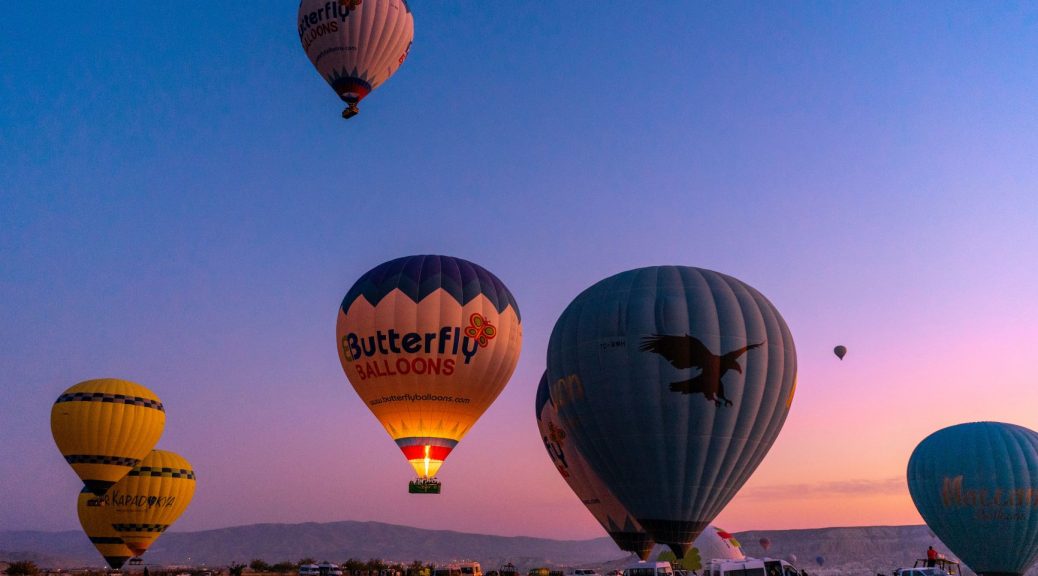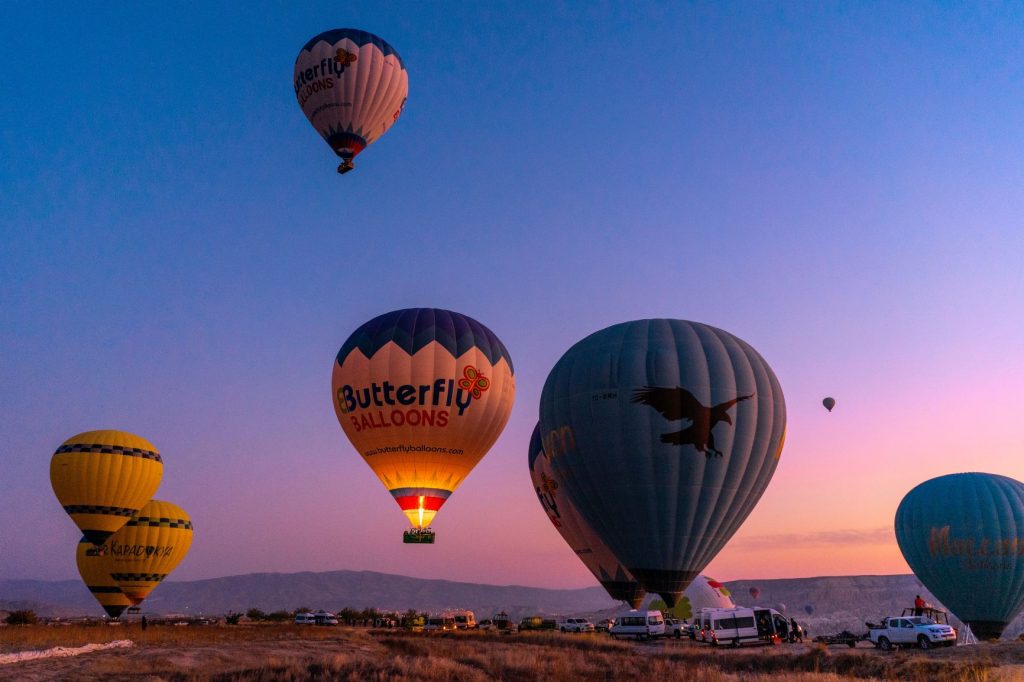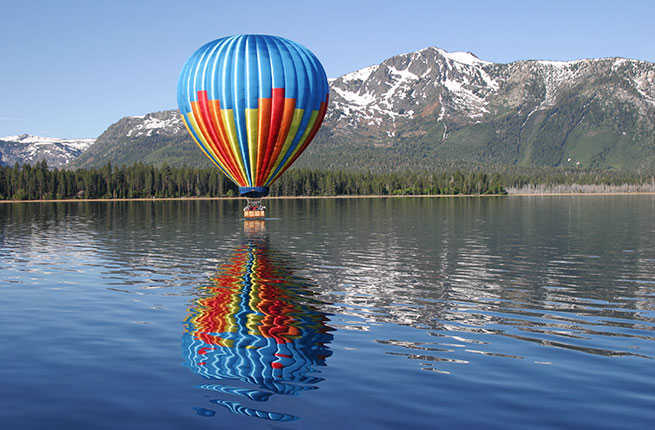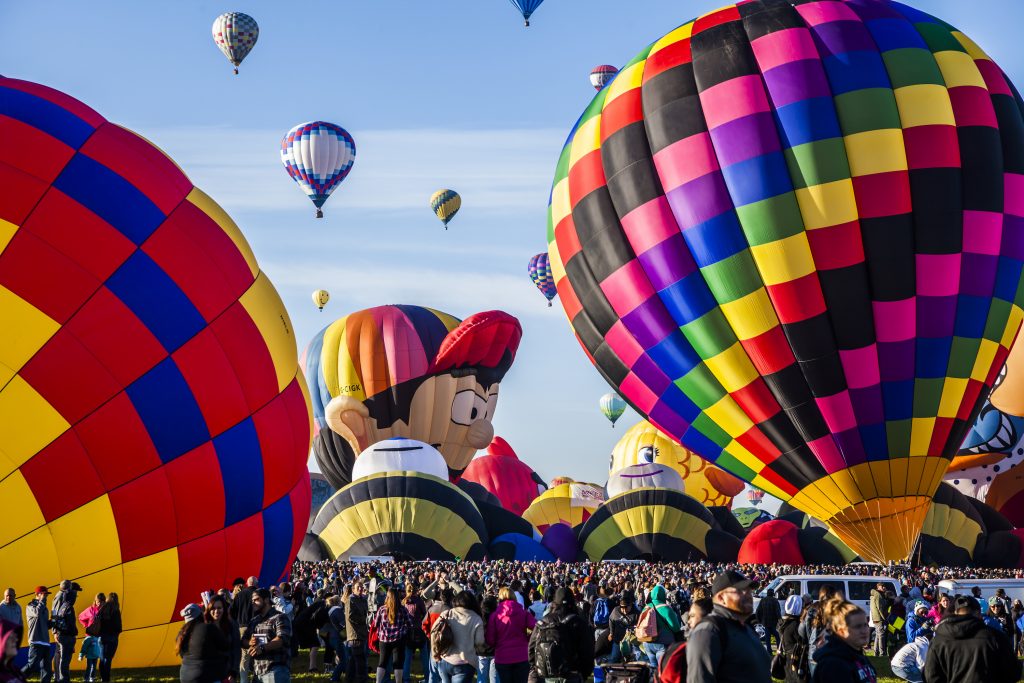
Hot air ballooning

Hot air ballooning is the activity of flying hot air balloons. Attractive aspects of ballooning include the exceptional quiet (except when the propane burners are firing), the lack of a feeling of movement, and the bird’s-eye view. Since the balloon moves with the direction of the winds, the passengers feel absolutely no wind, except for brief periods during the flight when the balloon climbs or descends into air currents of different direction or speed. Hot air ballooning has been recognized by Fédération Aéronautique Internationale (FAI) as the safest air sport in aviation, and fatalities in hot air balloon accidents are rare, according to statistics from the National Transportation Safety Board (NTSB).

First manned flight
A model of the Montgolfier brothers balloon at the London Science Museum
The first clearly recorded instance of a balloon carrying passengers used hot air to generate buoyancy and was built by the brothers Joseph-Michel and Jacques-Etienne Montgolfier in Annonay, France. After experimenting with unmanned balloons and flights with animals, the first tethered balloon flight with humans on board took place on October 19, 1783 with the scientist Jean-François Pilâtre de Rozier, the manufacture manager, Jean-Baptiste Réveillon and Giroud de Villette, at the Folie Titon in Paris. The first free flight with human passengers was on November 21, 1783.[1] King Louis XVI had originally decreed that condemned criminals would be the first pilots, but de Rozier, along with Marquis Francois d’Arlandes, successfully petitioned for the honor.

Flying in a hot air balloon is certainly an incredible experience, much different than flying in an airplane. From inside a balloon basket, you are able to witness the unforgettable landscapes, animals, sunrises and sunsets in a unique and rare way, with 360º views and open-air sensations.

Flight techniques
Most hot air balloon launches are made during the cooler hours of the day, at dawn or two to three hours before sunset. At these times of day, the winds are typically light making for easier launch and landing of the balloon. Flying at these times also avoids thermals, which are vertical air currents caused by ground heating that make it more difficult to control the balloon. In the extreme, the downdrafts associated with strong thermals can exceed the ability of a balloon to climb and can thus force a balloon into the ground.

Control
The inside of a hot air balloon’s envelope, seen from the gondola.
The direction of flight depends on the wind, but the altitude of the balloon can be controlled by changing the temperature of the air inside the envelope. The pilot may open one or more burner blast valves to increase the temperature inside the envelope, thereby increasing lift, and thus ascend or slow or stop a descent. The pilot may also open a vent, if the envelope is so equipped, to let hot air escape, decreasing the temperature inside the envelope, thereby decreasing lift, and thus descend or slow or stop an ascent. Unless the pilot intervenes, the air inside the envelope will slowly cool, by seepage or by contact with cooler outside air, and slowly provide less lift.